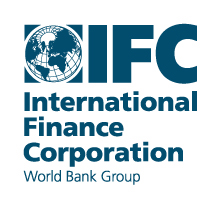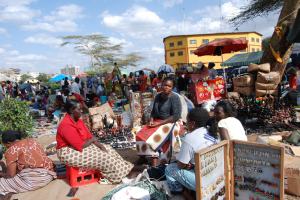With 2016 just around the corner, we are mere days away from getting started on the next set of development goals, the Sustainable Development Goals (SDGs). I have been able to follow the long consultation process that led up to their adoption in bits and pieces, through a conference in Seoul in 2012 and some related work on the food security side in Rome in 2014. I have a bit of an issue with the ‘Christmas tree approach’ to development goals (hang everything up and hope it sticks) embodied in the 17 goals and 169 targets the UN has adopted to guide the next 15 years of development work. But here I want to address one goal in particular: Zero Hunger.
I don’t like the concept of Zero Hunger as a development goal. This is not the most popular opinion in the place that I work, and so I thought I would give a few reasons to explain myself. What follows are the four main reasons for which the 2nd SDG is simply not good enough for me.
1. It’s not a goal. It’s an anti-goal. A goal would be something measurable, not just ‘find whatever I think we should eliminate, and eliminate it’. Zero anything is more of a vision. The underlying logic behind Zero Hunger is that it must be possible, and therefore can be a useful development goal. I address this point further down.
2. It’s confusing. Zero Hunger as in absolute Zero? The food insecure in Switzerland too? There’s no reason not to focus on them, sure, but let’s define terms. Is getting to absolute zero the same thing as getting to the current level of developed countries in general? And does it solicit the same approaches? I think no in both cases. Maybe we are on the cusp of large gains in the access, availability and utilization of food across the world- gains in the past decade alone have been astounding, and that’s good news. But the quality of food insecurity in richer countries in my estimation is very different from that in poorer countries. Food insecurity dropped with development in these former countries, but has kept steady at low levels for decades- even FAO stops counting undernourishment when it drops below 5%. To have this type of food security be the focus of the SDGs is to miss the point; sure, developed countries have gains to make, and it’s important to push them along that path- but to have that distract from the monumental effort required in developing countries is to miss where the largest impact can be had.
3. It’s not coherent with other goals. The goals on poverty reduction aren’t well linked to the food security goals- on one hand there’s ‘Reduce by 1/2 the number of people living in poverty…’, and on the other ‘End hunger, ensure access to safe nutritious food all year long’. That’s not the current relation of poverty reduction to reduction in food security though. People get less poor, then less food secure, not the other way around. FAO and WFP’s State of Food Insecurity annual report from back in 2013 had a great graph showing progress on the 1st MDG from 1990 to 2010. In this 20 year period, the prevalence of poverty dropped by almost half, while reductions in food insecurity (malnourishment and underweight) were of only about 10% points. How are we to get zero food insecure people while only aiming to reduce the number of people living in poverty by half? More importantly, if poverty is such a problem, why are we not running a ‘Zero Poverty’ campaign?
4. It’s not doable by 2030. It’s not. A goal is not, should not be, something that you walk into knowing that you will fail. You have to actually be able to do it. In Sudan WFP is cutting its support to tens of thousands of people. Not because there are fewer food insecure people, just because WFP doesn’t have any more money. It’s being disguised under the auspices of more ‘sustainable programmes’ to help people in the long term, but the fact is that WFP is helping fewer people who need help; it is cutting people off from support (bad, dependence-inducing support, but still support). Meanwhile the government of Sudan bombs towns, cuts off humanitarian access, and we have to shut up about it, because if not, we get kicked out. Rwanda is housing Congolese refugees for 20+ years now, and they’re not going anywhere soon; they still need support. What about international dialogues and agreements in the past 5 years makes anyone think that things are changing so much that in the next 15 years all these problems can be solved?
Food security is, like everything else, a matter of politics as well. And politics are…well, complicated. In a United Nations that continues its tradition of ambivalence toward governments that oppress their people, it becomes impossible for development and humanitarian actors to effectively support food security, much less eliminate food insecurity.
In this light I would have much rather seen an SDG goal and targets for food security that talk about humanitarian access to protracted conflicts, about the right to food, about government accountability, and about pushing states to capitalize on the truly great gains in food security over the past decades. Instead we are left with a vague wish list,the unfathomably dense idea of saying ‘I know, why don’t we just end hunger?’.











